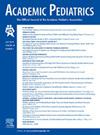比较两种训练方法来扩大每个孩子的安全环境(SEEK)方法。
IF 2.8
3区 医学
Q1 PEDIATRICS
引用次数: 0
摘要
目的:比较两种常见的继续医学教育培训模式——独立在线(IND)和维持认证4级活动(MOC)——和初级保健实践特征对扩大(即采用、实施和维持)“每个孩子的安全环境”(SEEK)方法的影响。方法:这项纵向、多地点研究涉及美国44个实践,其中25个被随机分配到两种训练模式之一。我们确定了每个诊所的初级保健专业人员(pcp)完成指定培训(即“剂量”)的程度。在两年的时间里,实践人员被调查了多达4次,关于他们对改变实践、基于证据的实践和他们的领导的看法。预测因素包括训练方式、剂量和训练特征。结果是关于SEEK的启动、保真度和持续性。结果:只有31%的MOC和25%的IND实践有大多数pcp完成了培训;15%和17%为中间状态,占50-74%。大约一半的实践实现了启动,并且大多数实现了忠实的SEEK,并持续了两年。IND与MOC实践之间几乎没有差异;更多的训练与更高的忠诚度相关,特别是在IND实践中。具有更大的基线承诺和效能感的实践更有可能开始实施SEEK并忠实地这样做。结论:研究结果支持更简单的IND培训方法和良好的准备对促进承诺和效能感的价值。需要改进鼓励pcp完成这类培训的战略。该研究为评估广泛使用的培训模式以及扩大以证据为基础的实践(如SEEK)提供了一个有价值的例子。本文章由计算机程序翻译,如有差异,请以英文原文为准。
Comparing Two Training Approaches to Scaling Up the Safe Environment for Every Kid (SEEK) Approach
Objective
To compare the impact of 2 common continuing medical education training modalities—independent online (IND) and a Maintenance of Certification-4 activity (MOC)—and primary care practice characteristics on scaling up (ie, the adoption, implementation, and sustainment) of the Safe Environment for Every Kid (SEEK) approach.
Methods
This longitudinal, multisite study involved 44 practices across the United States, 25 of whom were randomized to one of 2 training modalities. We ascertained the extent to which primary care professionals (PCPs) in each practice completed the assigned training (ie, “dose”). Practice personnel were surveyed up to 4 times over a 2-year period regarding their views on changing their practice, evidence-based practices, and their leadership. Predictors included training modality and dose and practice characteristics. Outcomes were startup, fidelity, and sustainment regarding SEEK.
Results
Only 31% of MOC and 25% of IND practices had most (≥75%) PCPs complete their training; 15% and 17% had an intermediate status with 50%–74%. Approximately half the practices achieved startup and most implemented SEEK with fidelity and sustained this for 2 years. There were few differences between the IND versus MOC practices; more training was associated with greater fidelity, especially in the IND practices. Practices that had greater baseline commitment and sense of efficacy were more likely to start implementing SEEK and do so with fidelity.
Conclusions
The findings support the simpler IND training approach and the value of sound preparation to foster commitment and a sense of efficacy. Improved strategies for encouraging PCPs to complete such training are needed. The study offers a valuable example of evaluating widely used training modalities as well as the scaling up of an evidence-based practice such as SEEK.
求助全文
通过发布文献求助,成功后即可免费获取论文全文。
去求助
来源期刊

Academic Pediatrics
PEDIATRICS-
CiteScore
4.60
自引率
12.90%
发文量
300
审稿时长
60 days
期刊介绍:
Academic Pediatrics, the official journal of the Academic Pediatric Association, is a peer-reviewed publication whose purpose is to strengthen the research and educational base of academic general pediatrics. The journal provides leadership in pediatric education, research, patient care and advocacy. Content areas include pediatric education, emergency medicine, injury, abuse, behavioral pediatrics, holistic medicine, child health services and health policy,and the environment. The journal provides an active forum for the presentation of pediatric educational research in diverse settings, involving medical students, residents, fellows, and practicing professionals. The journal also emphasizes important research relating to the quality of child health care, health care policy, and the organization of child health services. It also includes systematic reviews of primary care interventions and important methodologic papers to aid research in child health and education.
 求助内容:
求助内容: 应助结果提醒方式:
应助结果提醒方式:


